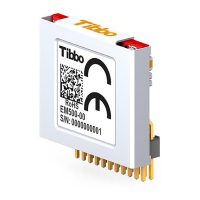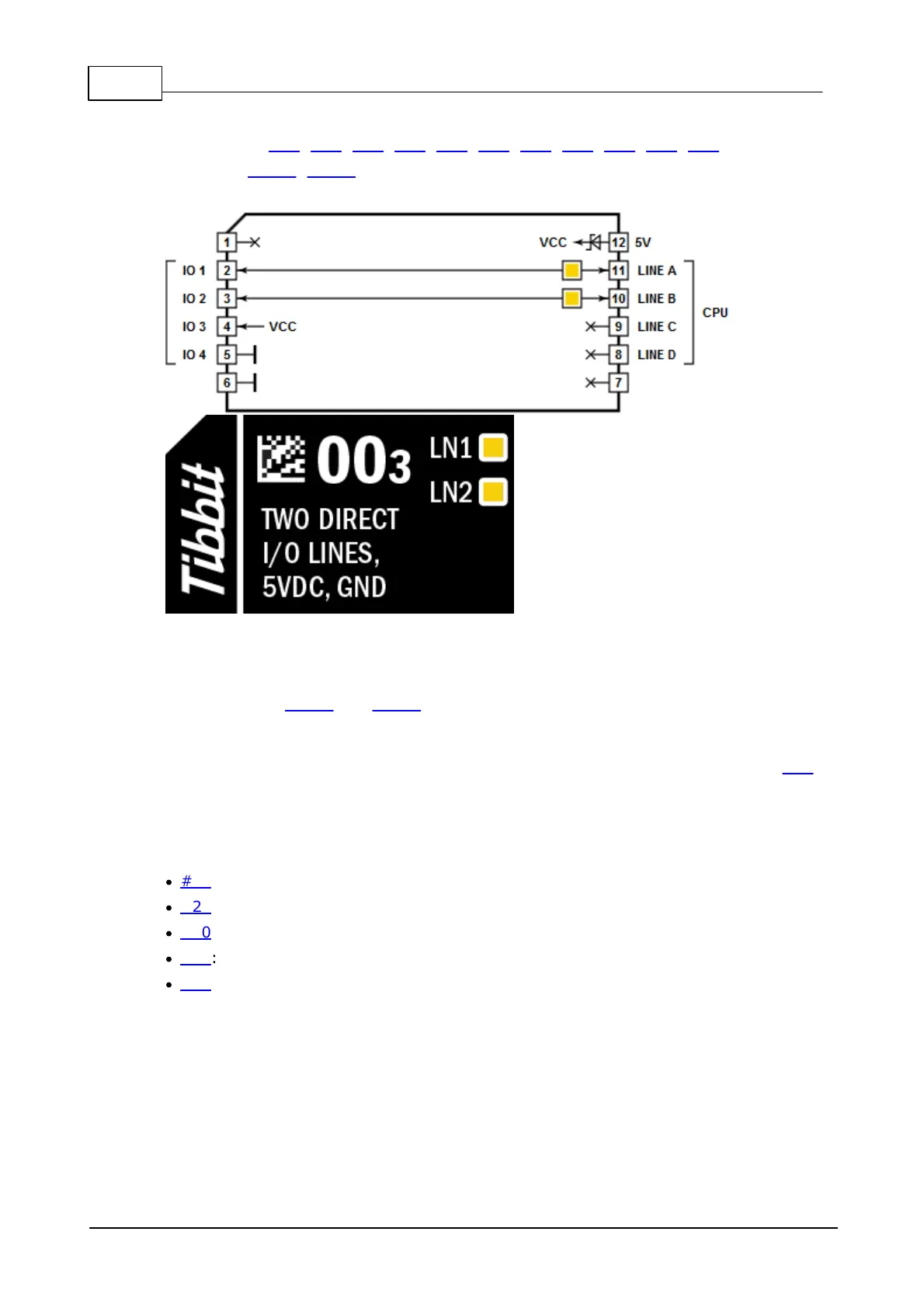285 Programmable Hardware Manual (PHM)
© Tibbo Technology Inc.
Power requirements: 5V/20mA
Mates with: #19, #20, #21, #28, #29, #30, #35, #36, #38, #39, #41
See also: #00-1, #00-2
Details
As with Tibbits #00-1 and #00-2, this one "gets the CPU lines out". The only
difference is that one of the lines is replaced by +5V power, and another line is
ground. This leaves you with only two CPU lines, but very often this is sufficient.
The GND and +5V lines may be necessary when using this Tibbit with "C" Tibbit #21
(four terminal blocks). #21s doesn't have its own ground or power, so those must
come from the neighboring "M" device, such as this Tibbit.
Another use for this Tibbit is with "C" devices that implement various sensors:
·
#28: Ambient light sensor
·
#29: Ambient temperature meter
·
#30: Ambient humidity meter
·
#35: Barometric pressure sensor
·
#36: 3-axis accelerometer
All of the above sensors use I2C interface to talk to the main CPU. I2C only requires
two CPU lines. The remaining two lines are ground and +5V power.
Note that a CPU I/O line has the voltage swing from 0-3.3V when the line is enabled
(io.enabled= 1- YES). The voltage may be close to 5V when the line is disabled
(io.enabled= 0- NO). This is because the CPU has weak pull-up resistors connected
to 5V.

